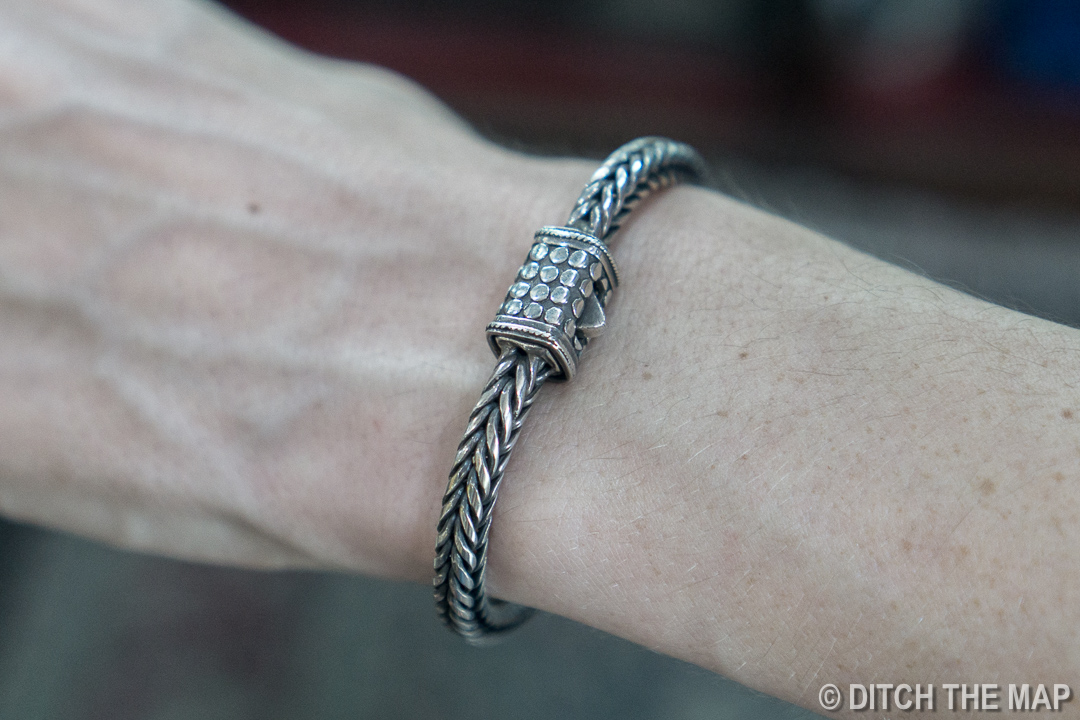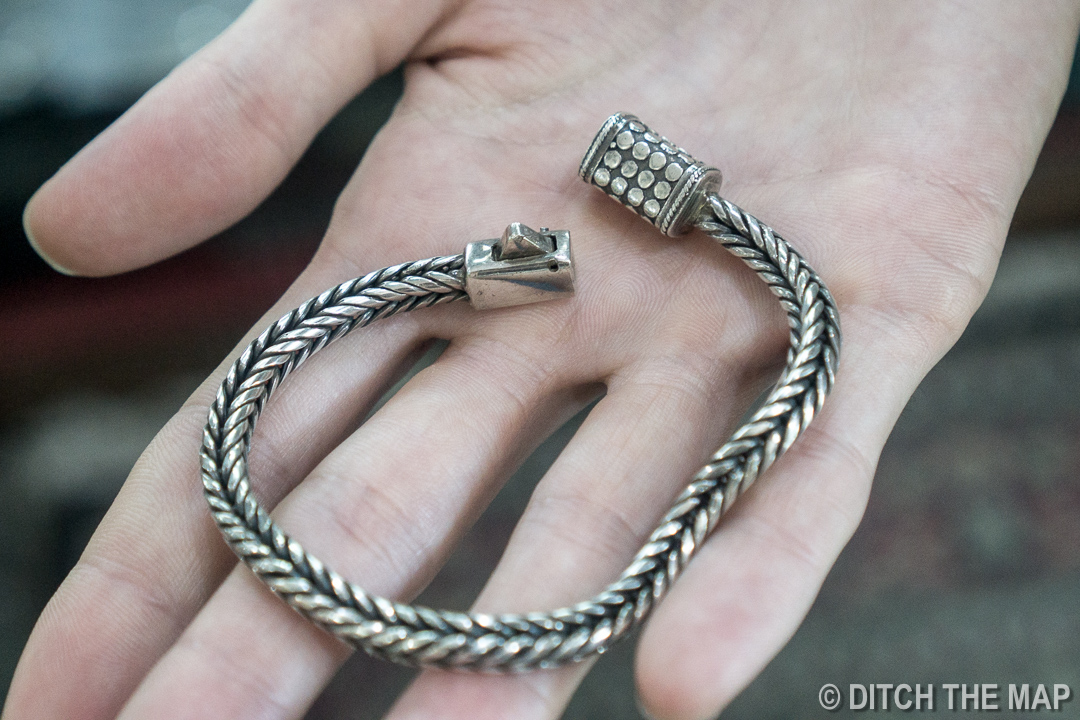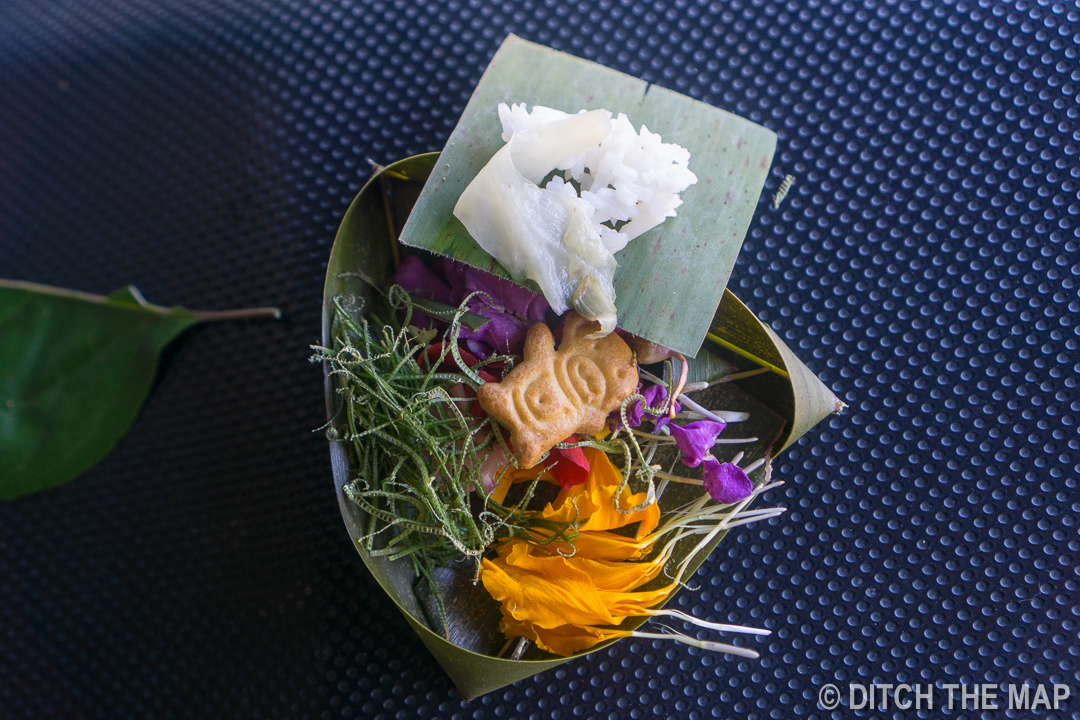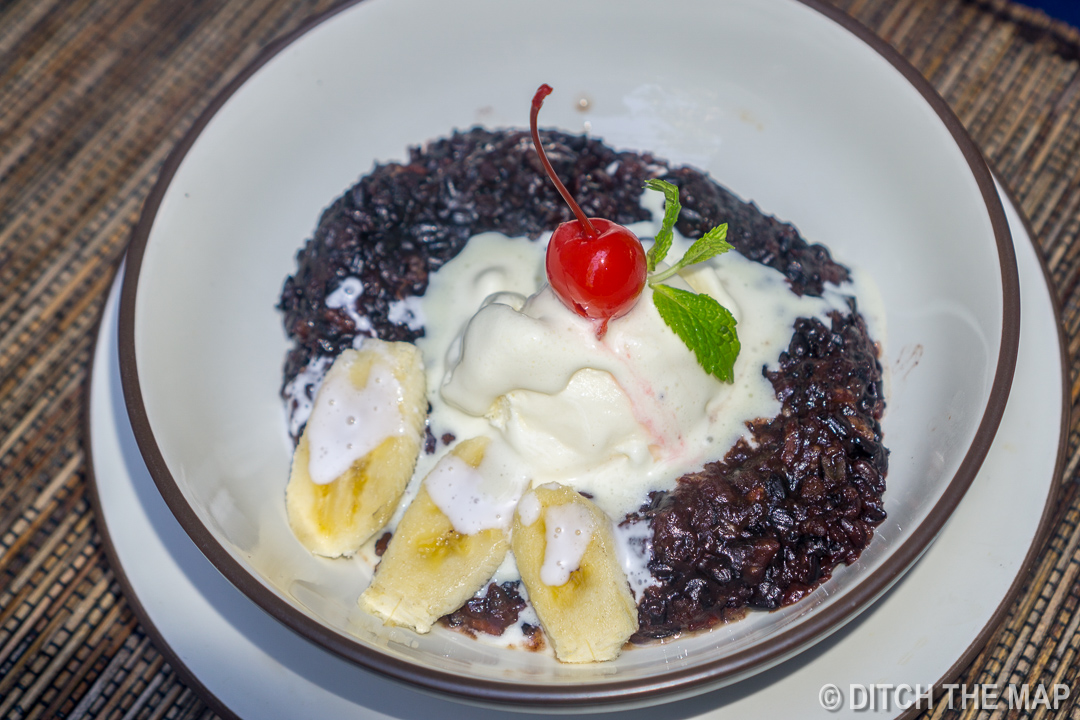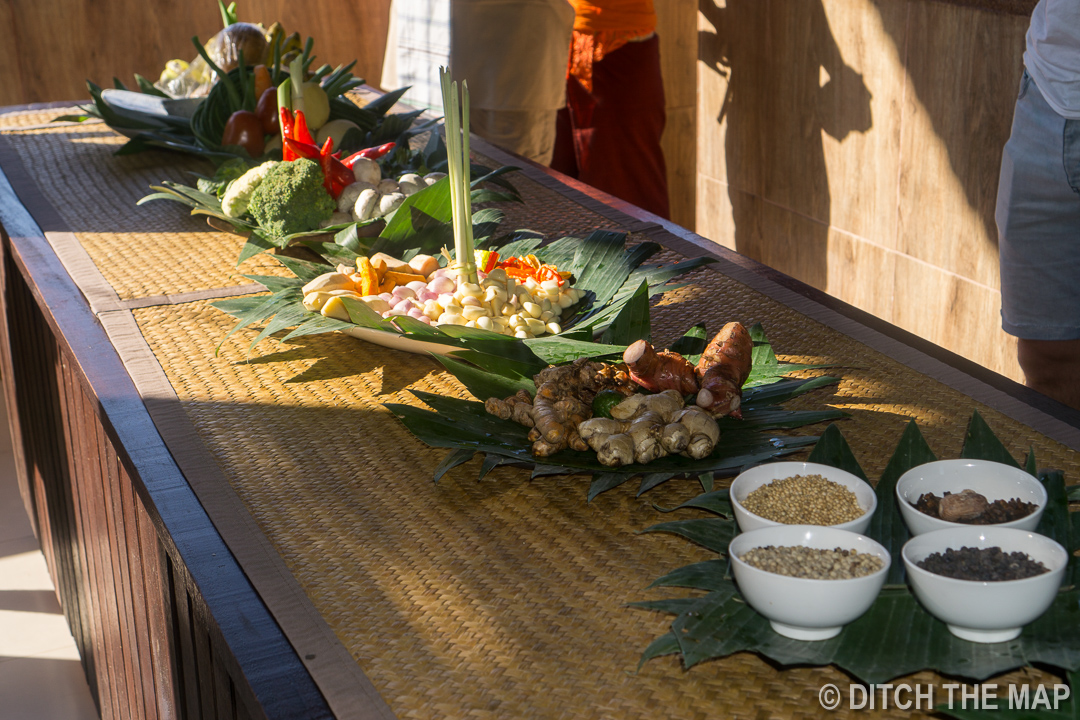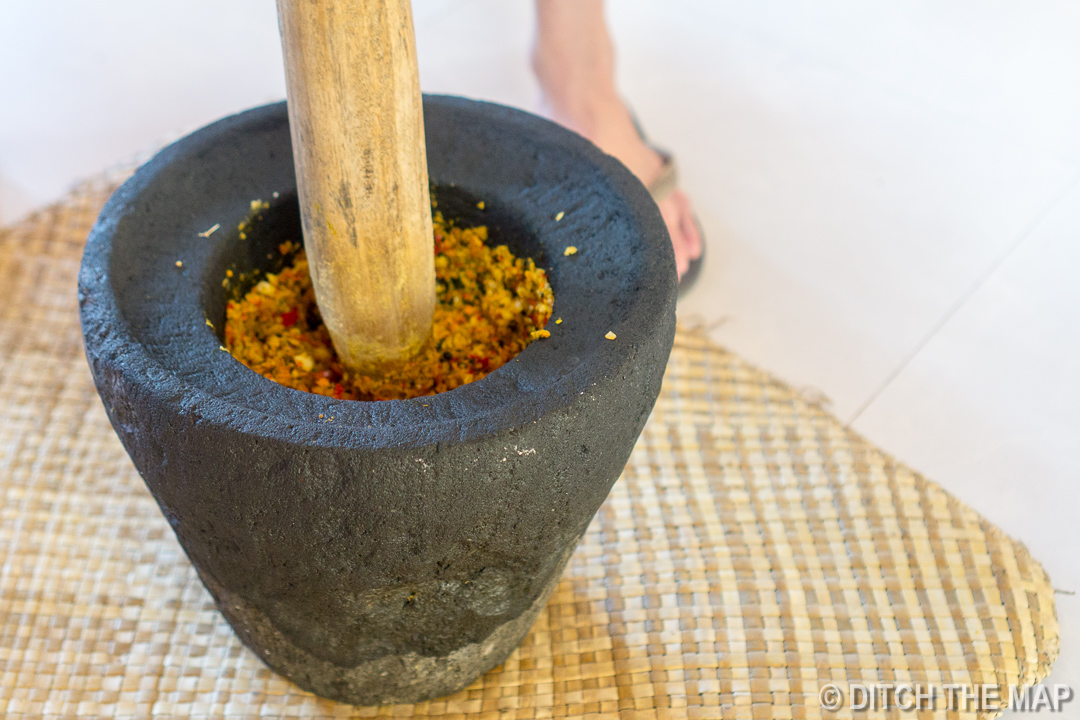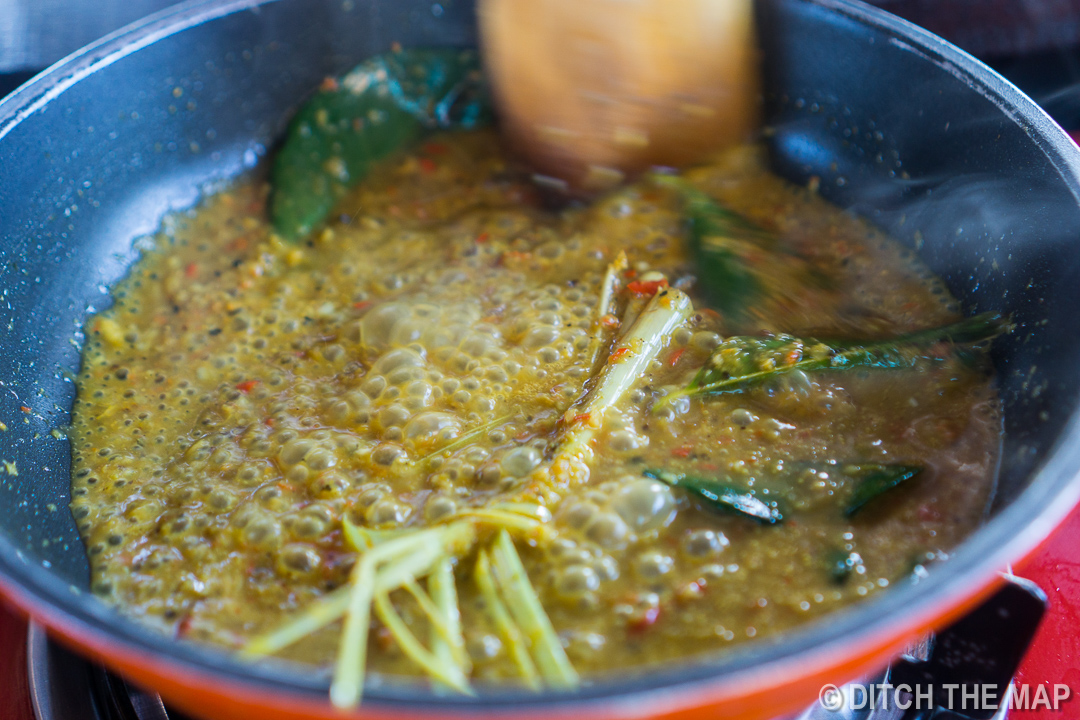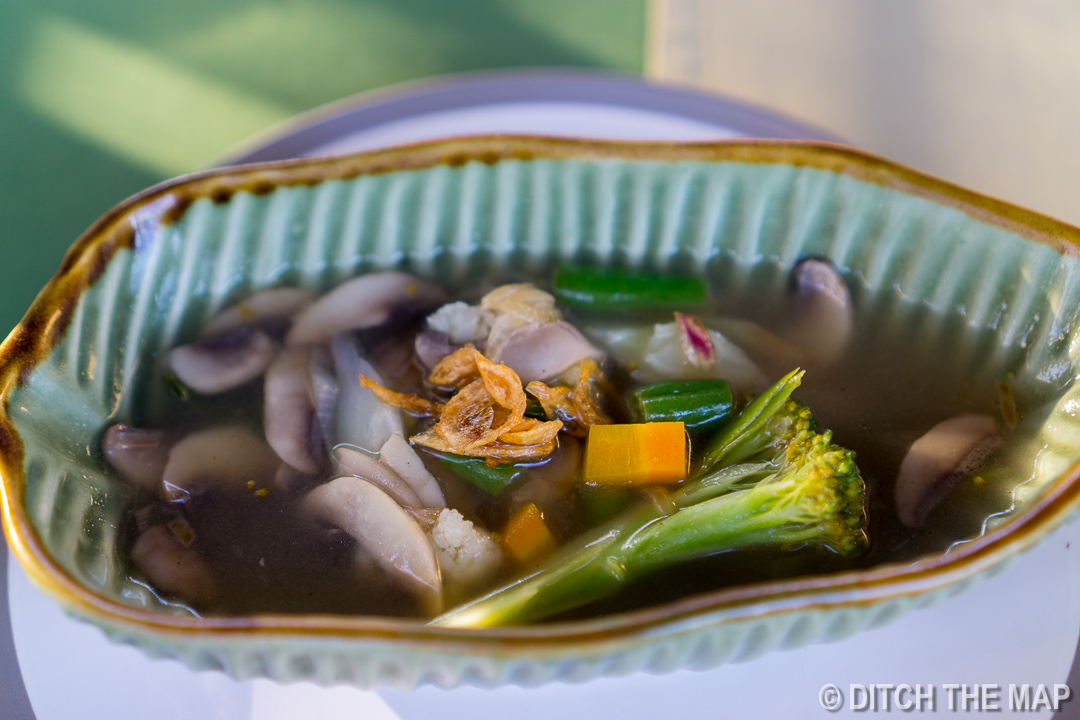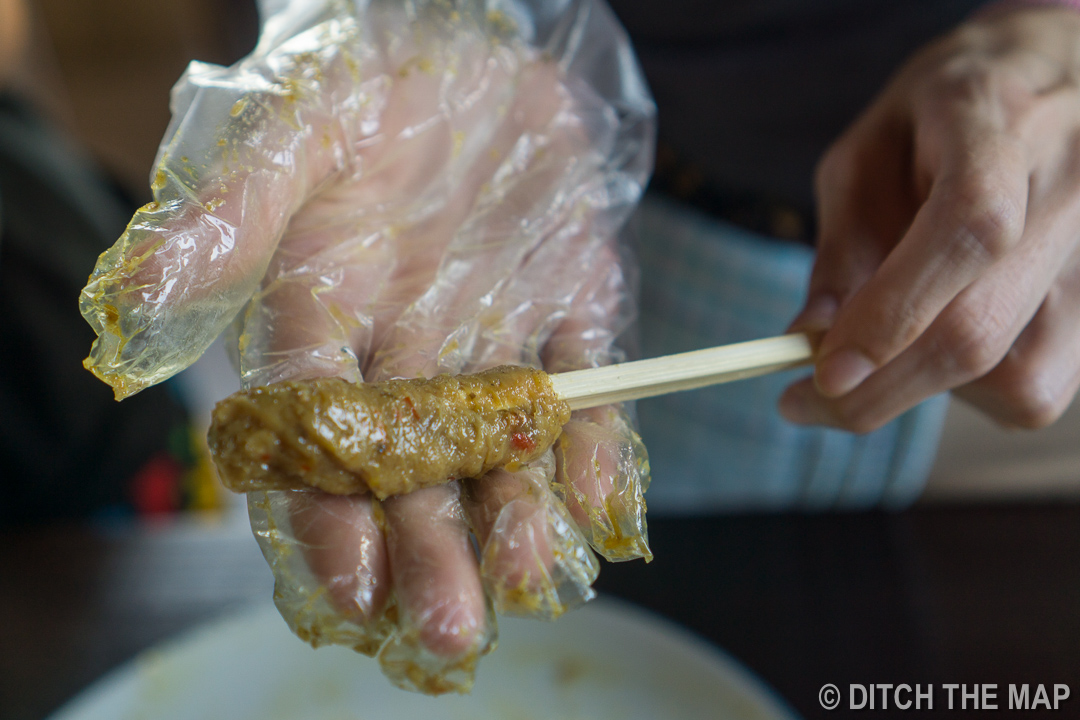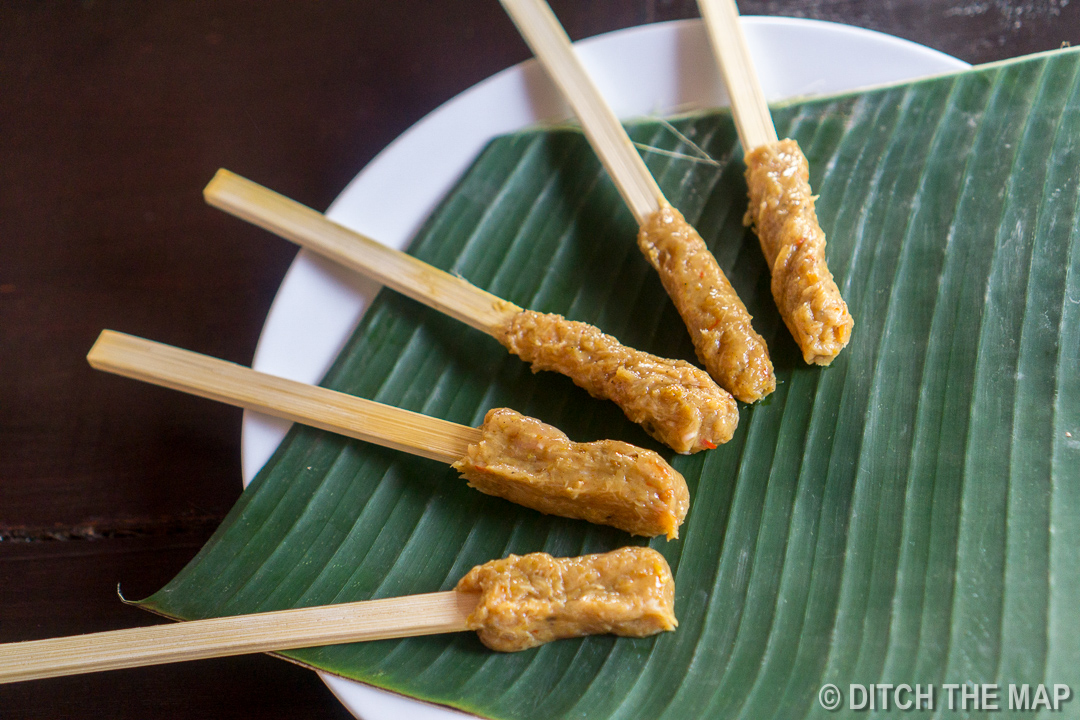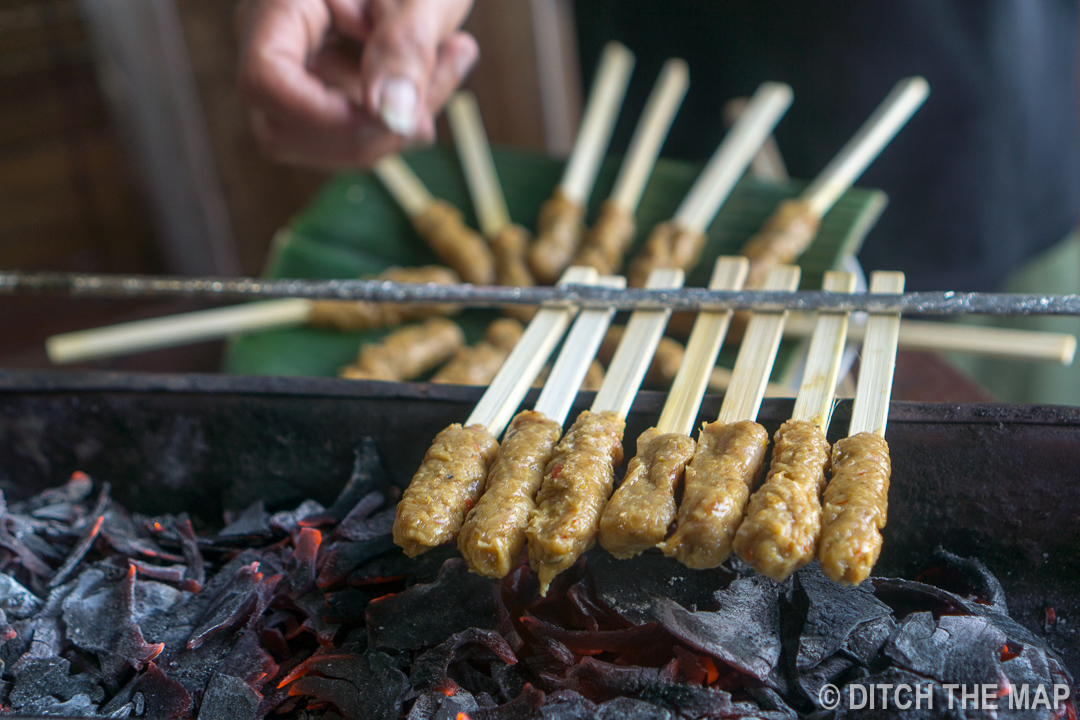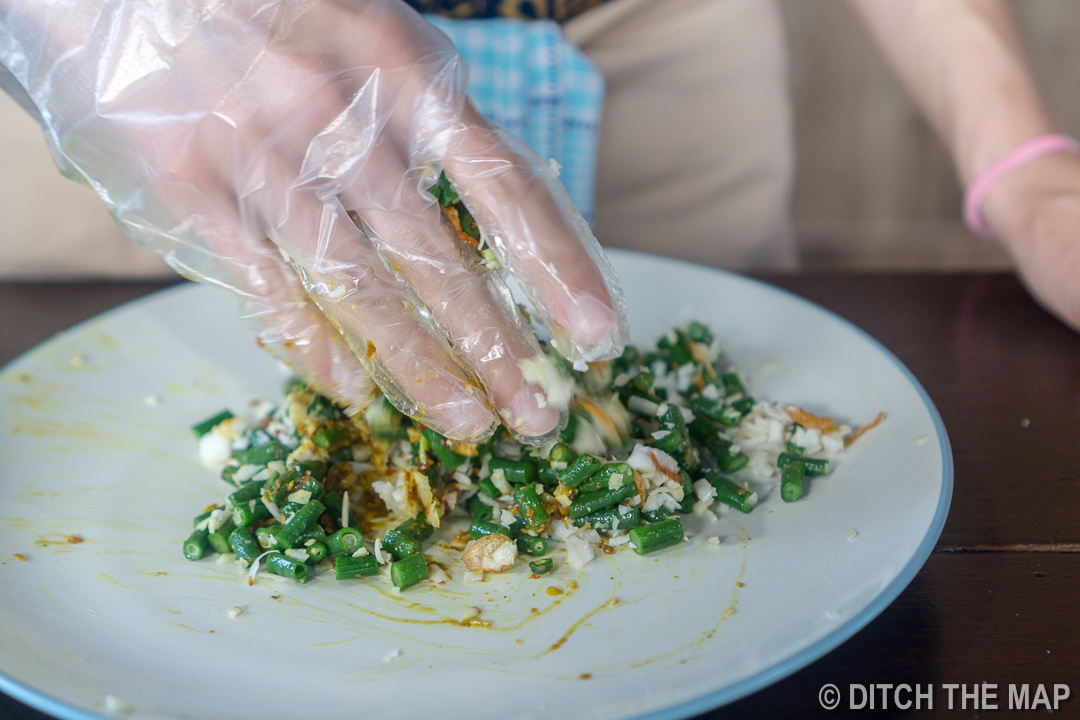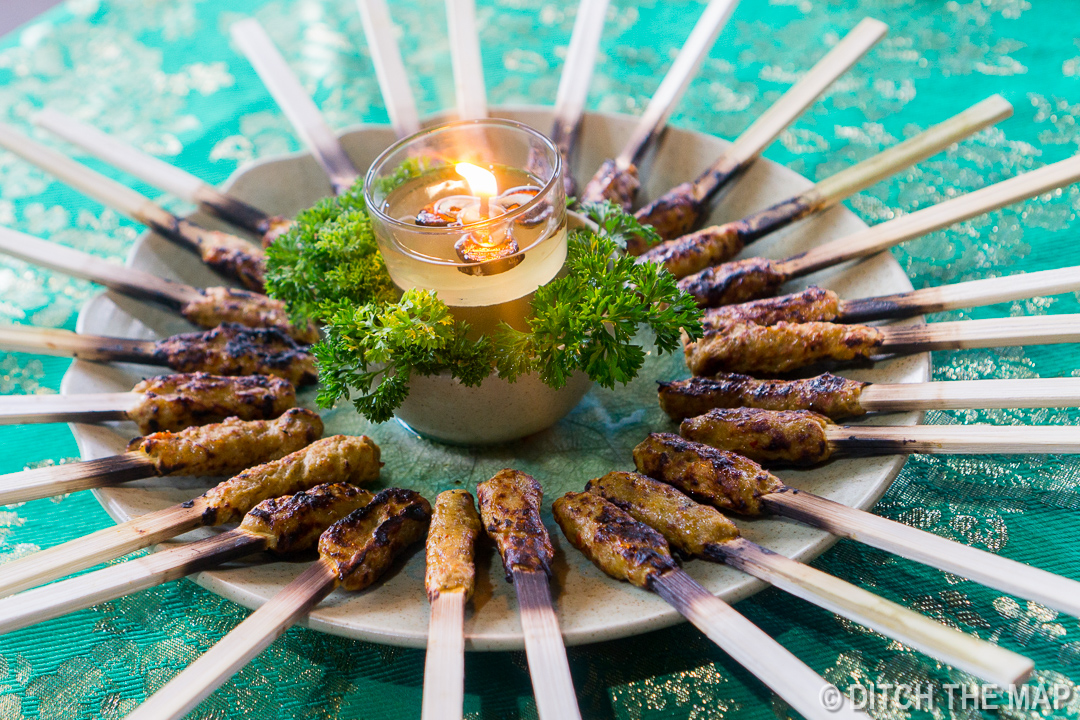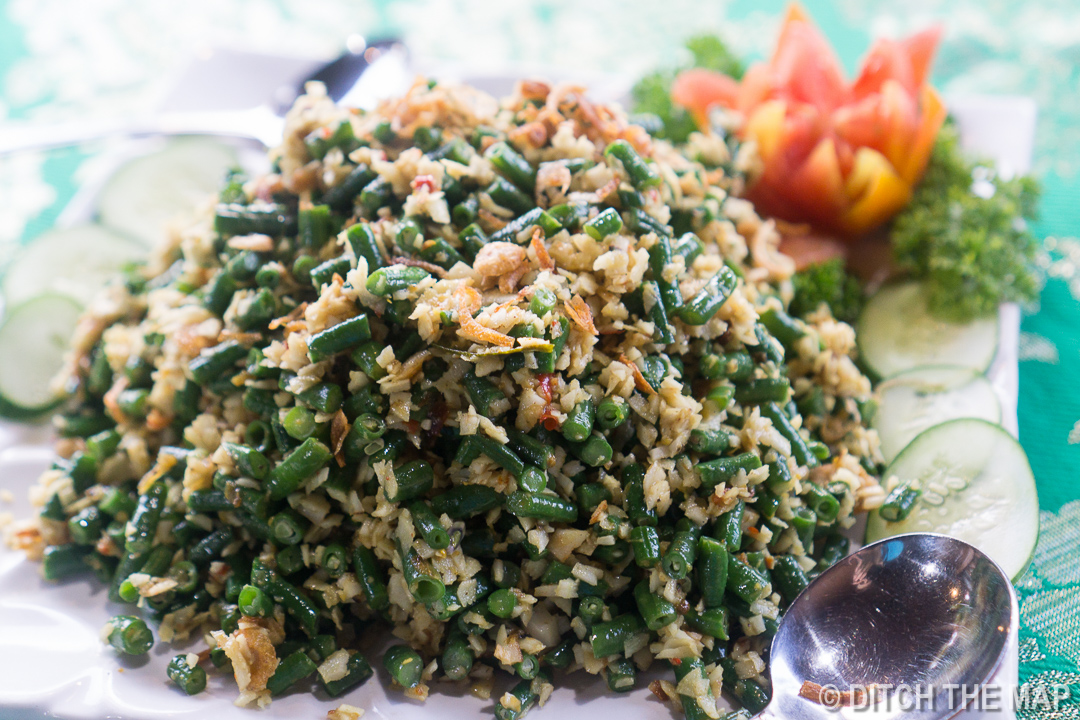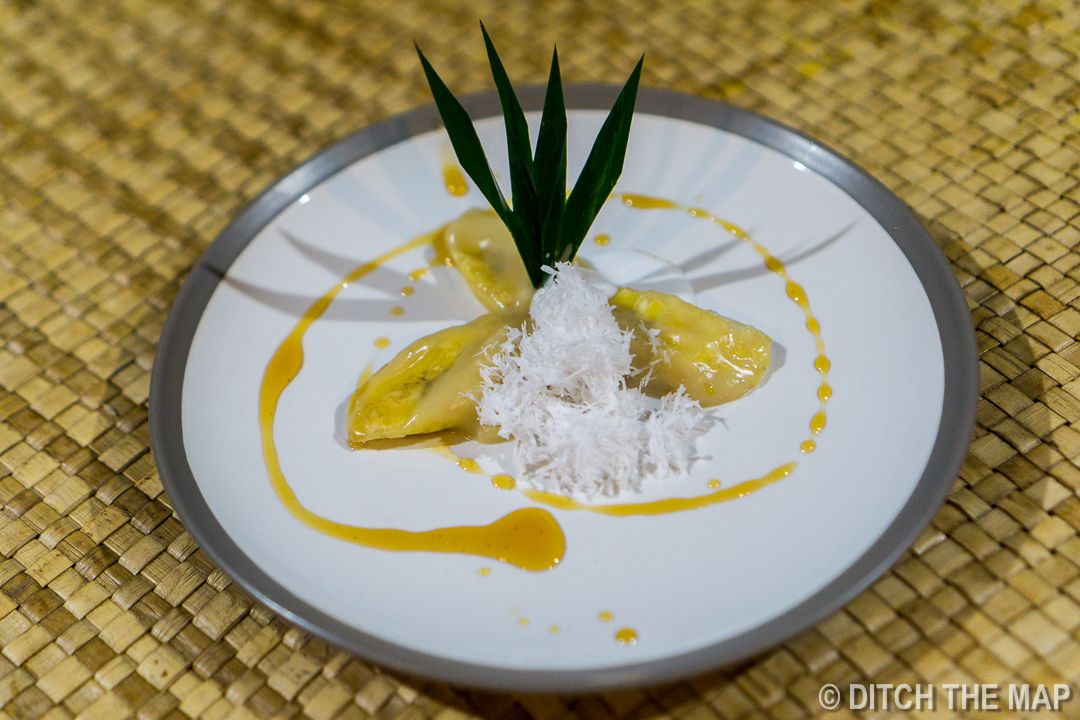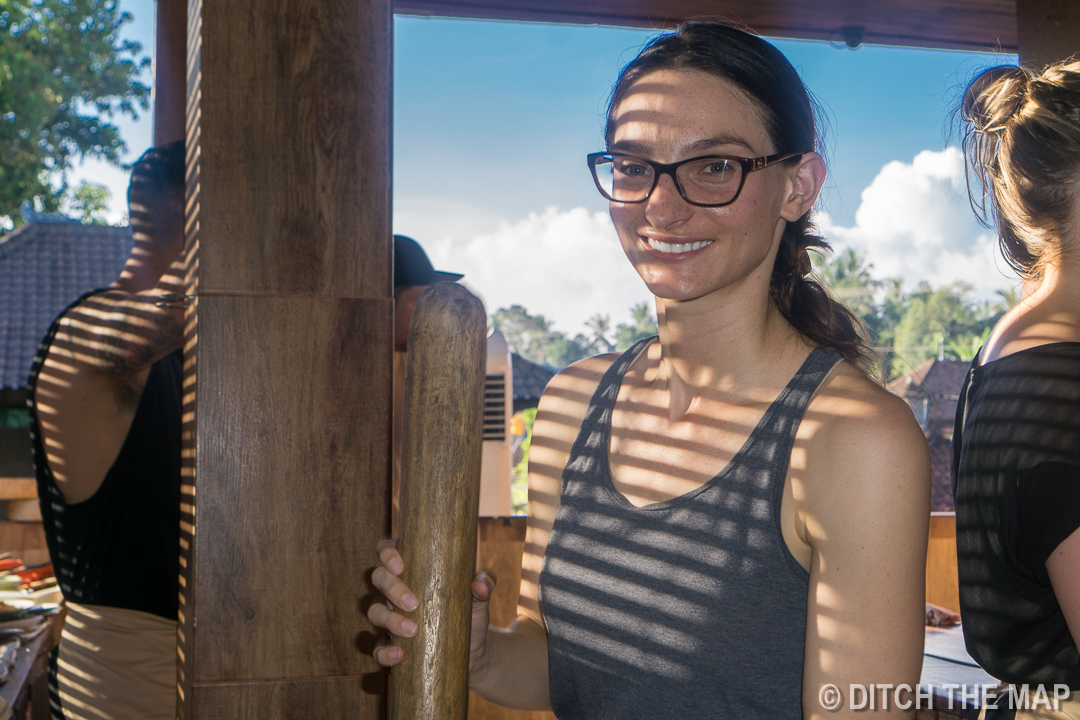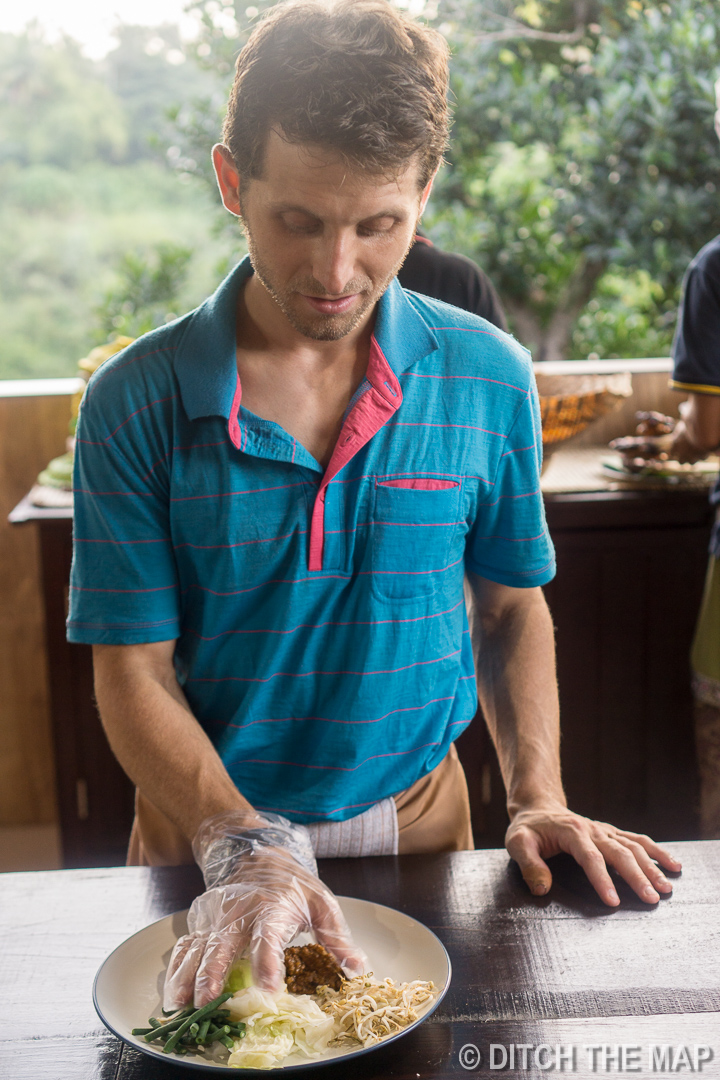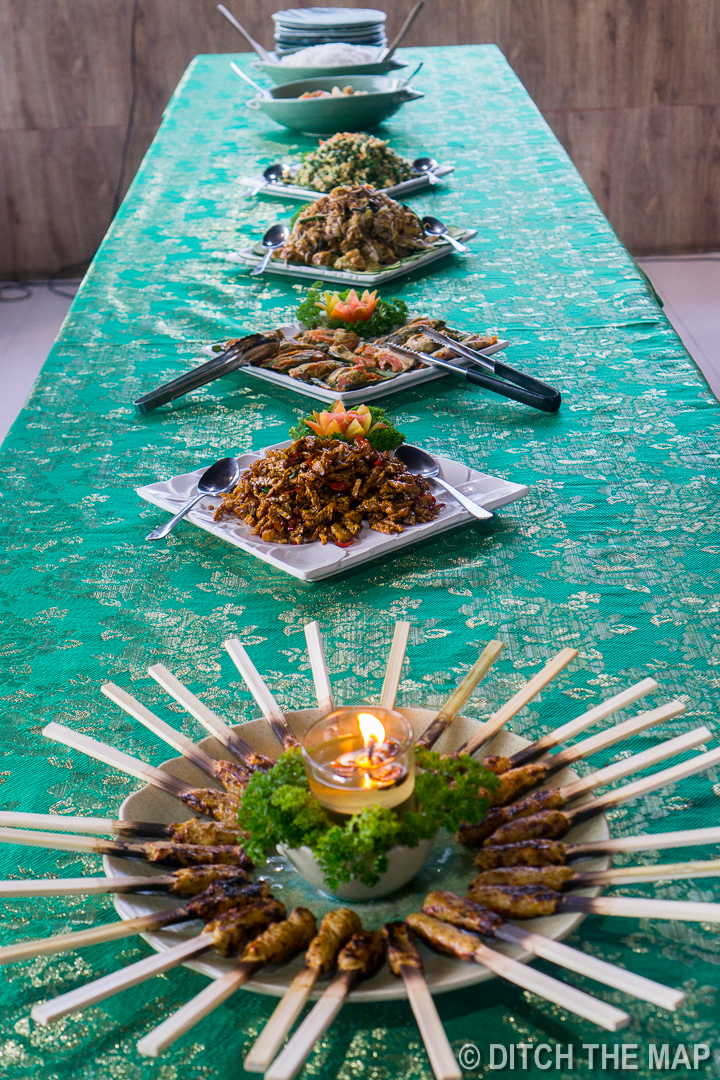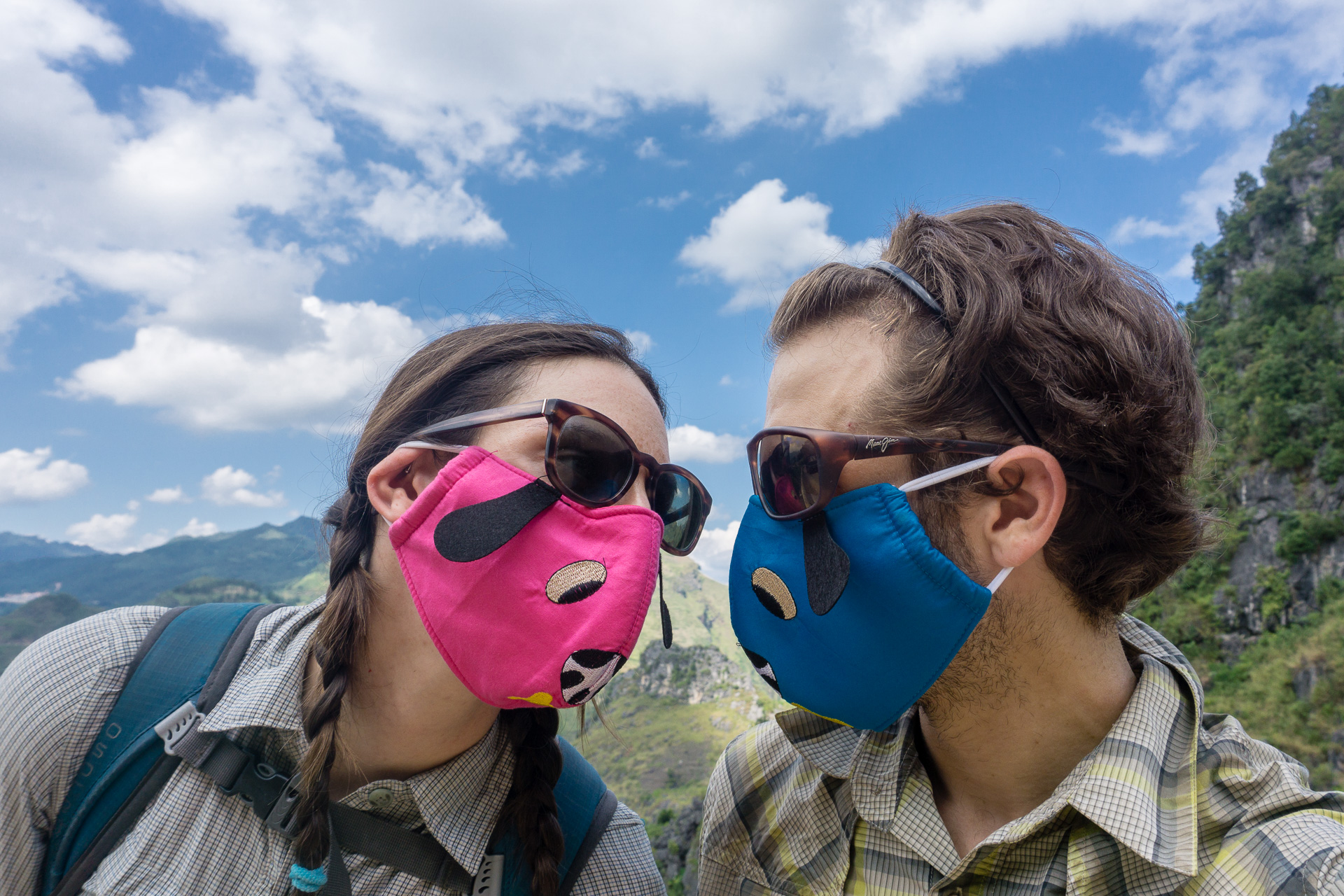7 Days in Ubud and Tulamben, Bali
/Ubud
our first time visiting Ubud (2016) we stayed at Pondok Bali guesthouse, a traditional style Balinese home. This was our first time inside a traditional Balinese home, which is more of a compound than a home by American standards. We had a wonderful stay at Pondok Bali, and the staff at the guesthouse were so kind and helpful and served us up a delicious, fresh breakfast each morning. Through the guest house we rented a scooter for our entire stay, making getting around much more convenient.
"The Balinese traditional house follows a strict ancient architectural guide which is a product of a blend of Hindu and Buddhist beliefs, fused with Austronesian animism, resulting in a house that is "in harmony" with the law of the cosmos of Balinese Hinduism.[1]
As most traditional houses in Indonesia, spatial orientation and hierarchy are crucial considerations in Balinese architecture. The concept is based on the Hindu dharma principle: every objects in the universe is conceived as having an ideal location; this must be correctly aligned at all time in order to achieve harmony with the universe, and thus moksha – the point of liberation where a human achieves a perfect state of being – can be achieved. The principle of Balinese architecture — such as the proper size, location, and alignment of building types — is written in the Asta Kosala Kosali."
The entire Pondok Bali property is comprised of individual one-story rooms (actually, we were told that until a few years ago there was a rule that no building on the island could exceed 3 stories). The perimeter of the property is surrounded by a wall. There is a grand entrance and outdoor walkways leading to the different rooms. The outdoor space is covered in greenery.
Each of these traditional homes have a temple placed in an auspicious location. Actually, the layout of the home reminds us of the temples we have seen here which are also compounds with courtyards open to the sky. Extended family live inside the home and the head of the household lives in the room farthest back from the entrance.
traditional Balinese style home
Pet Birds
The family that owned the property, like many others in Indonesia had several pet birds. Birds are the most popular pet in Indonesia.
As a popular Javan saying goes, a man is considered to be a real man if he has a house, a wife, a horse, a keris (dagger), and a bird. (National Geographic)."
Joking aside, with a little research about the popularity of pet birds, I learned the sad truth that the global illegal bird trade and exotic pet markets are endangering hundred of species of birds in Indonesia. "More than a fifth of households have them, which (conservatively) comes out to around 2.6 million birds in captivity in the five biggest cities, according to a 2005 study." Poor birds. They don't seem to serve much purpose as pets either...they just sit neglected in their cages unable to fly or socialize.
Our second Time in Ubud we spent our time in a luxurious, yet very affordable, private villa in the middle of rice fields! The rooms were exquisitely decorated with local furniture, the bed was extremely comfortable, and there were tons of outdoor furniture to lounge about. We had a private pool, kitchen, and day room. The villa was two stories, but there are also single room villas for rent. Check out the property Called Solo Villas and Retreat:
The City of Ubud
Our first impression of Ubud was lackluster. We were put off by the traffic and crowds of tourists. After quiet scenic Munduk, the streets of downtown Ubud were a bit jarring. We walked around observing countless retail-shops and trendy restaurants. Ubud is known to be a good "foodie" city- there is definitely no shortage of restaurants, which serve everything from Indonesian cuisine to hippie vegan fare.
Paradiso Ubud in Bali
We stumbled upon the movie theater, Paradiso Ubud, and eager to get off of the crowded streets we ducked in for the next show at 4pm. It was a laid back theater with couches in place of chairs. We ordered some food at the theater, which also owns a vegetarian restaurant. Our ticket purchase saved us 50,000rp on the food, whoop whoop . While snacking on our healthy meal, and our decidedly too healthy tasting carrot cake, we watched the English subtitled Hindi flick, PK.
PK is a thoughtful, though juvenile movie that questions religion through the eyes of a foreigner to the planet. The message is actually really sweet and over-shines the at times cheesy dialogue. Pk, the goofy main character, samples multiple religions while seeking the purest most personal version of 'God,' untainted by the corruption, fraud and inaccuracies too often intertwined in many formal practices of religion.
Tegalalang Rice Terraces
We took our rented scooter north of our hotel to check out the Tegalalang Rice Terraces. Nestled behind hillside shops and cafes we found the vibrant green terraces, which descend into a valley. We parked our bike and hiked through the fields, stopping in a cafe after to enjoy the view and some lemongrass tea.
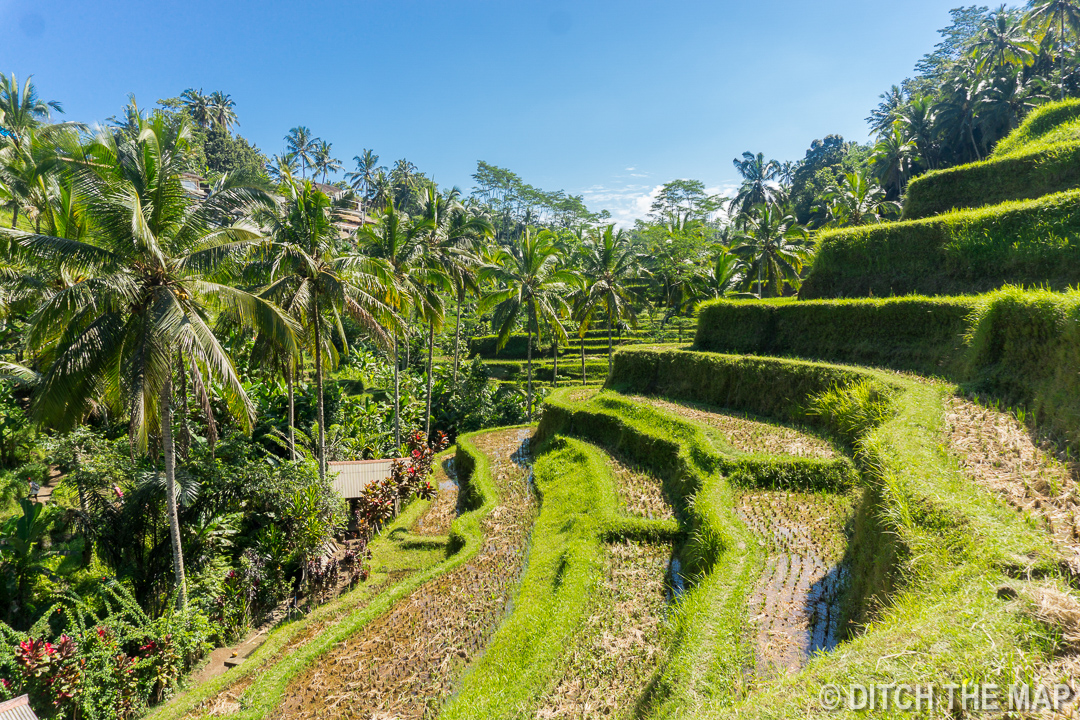
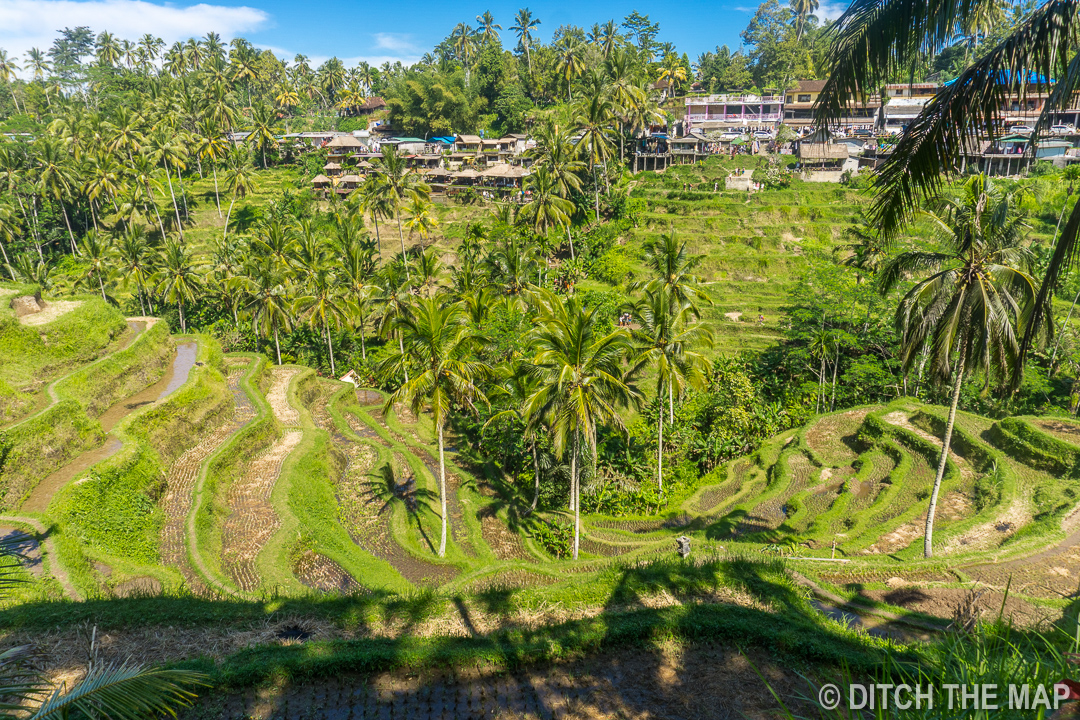
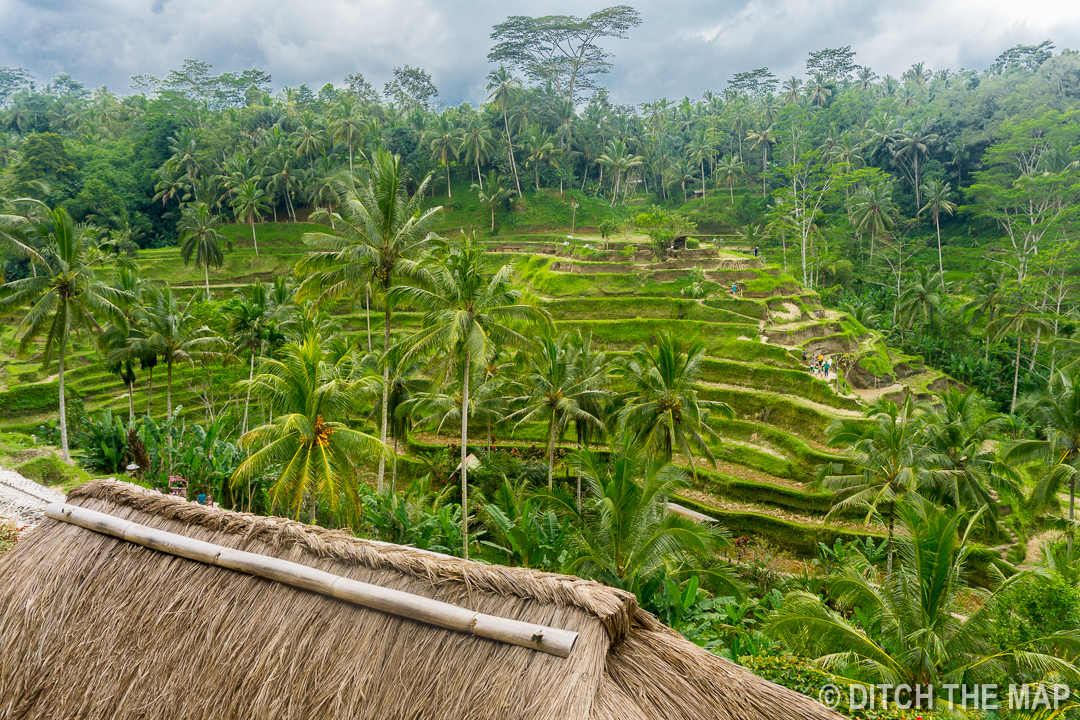
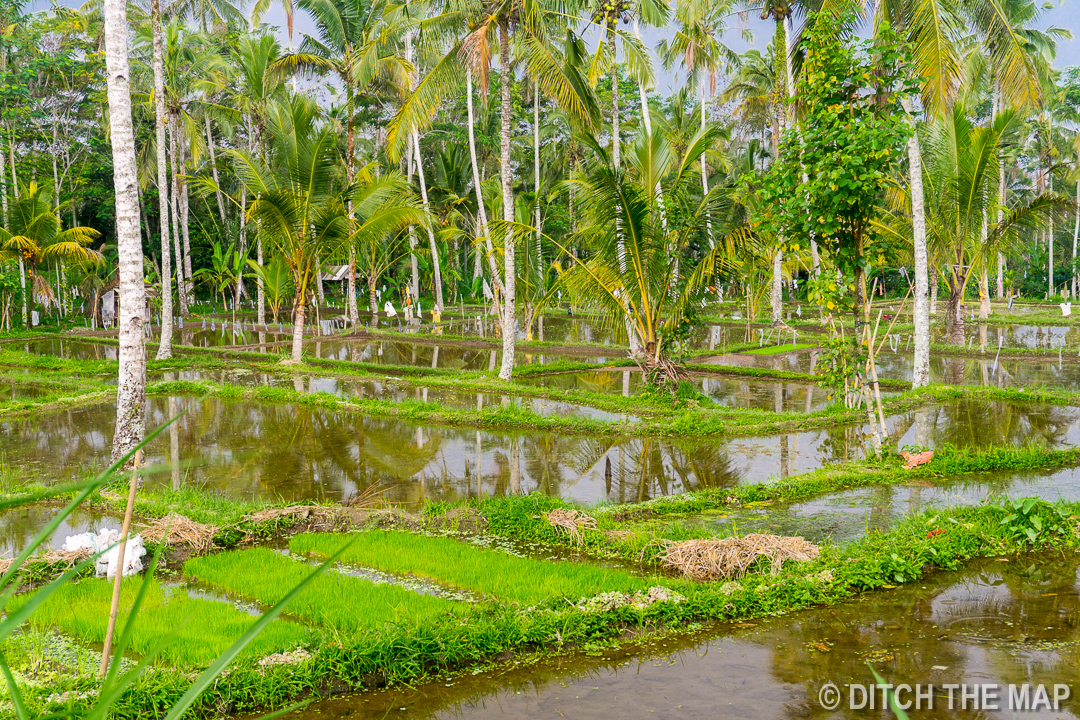
Though beautiful the rice terraces were crowded, and laced with young Indonesian children pushing post cards and questionable donation huts which demanded a donation as if it were an obligatory fee (after witnessing the small donation we gave immediately pocketed by the woman at the first hut we did not donate to the second hut we passed). It was hard to discern if the people working at the donation huts were employees or just clever locals off the street.
Panoramic of Tegalalang Rice Terrace in Ubud, Bali. (click to view)
While examining our google maps (what would we do without google maps?!) we noticed that we weren't too far away from the active volcano, Mt. Batur. In fact it was just a few miles north on the same road. We figured we would take a joy road to the base of the volcano on our beloved scooter.
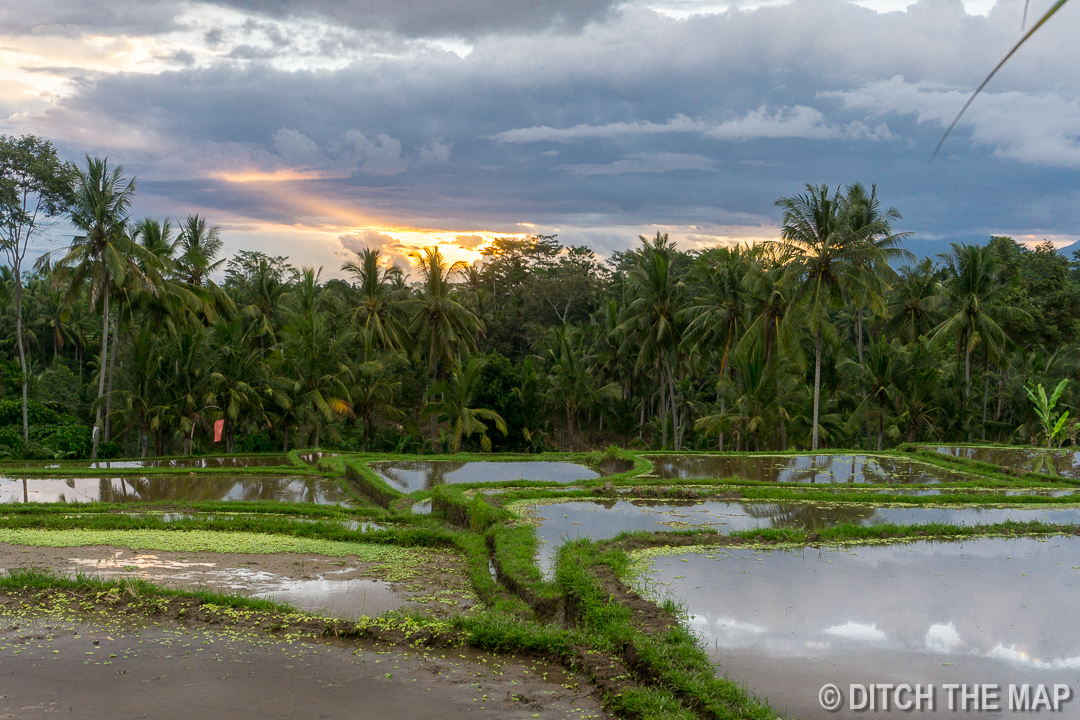
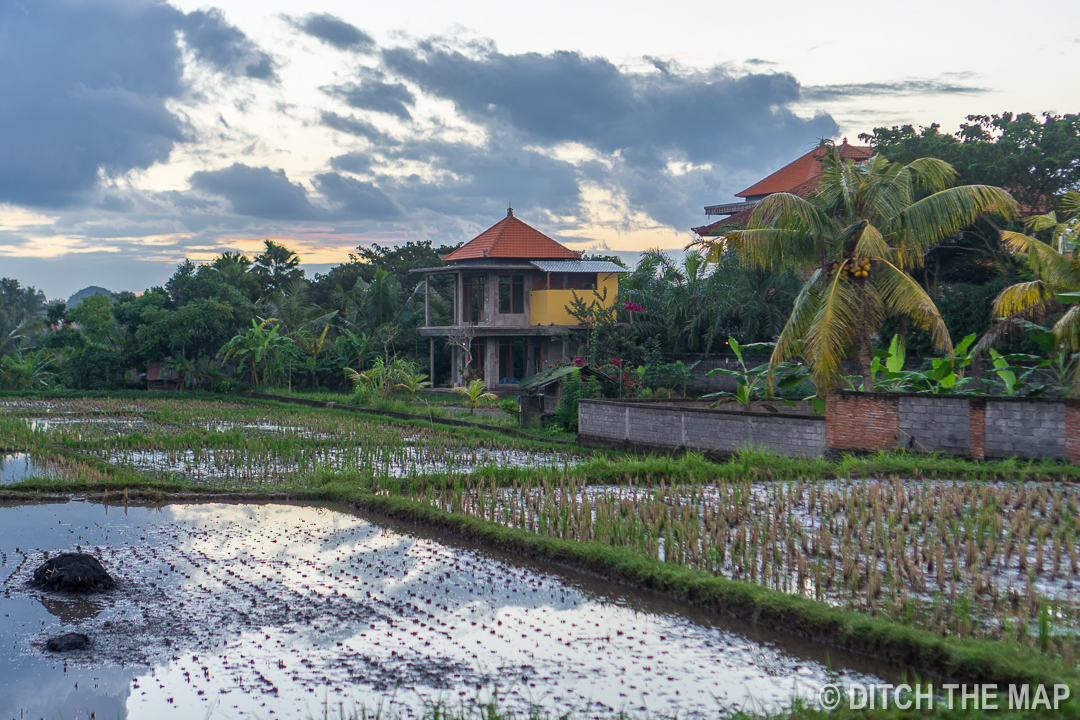
Coffee Plantation
Our joy ride was interrupted when it began to rain. We pulled over at the soonest opportunity, parked the scooter and ran for cover. No sooner had we taken cover then we were approached by a friendly guy with two umbrellas. How convenient?! Apparently we had pulled over at one of the many coffee plantations along the road and were now receiving a free tour of the place. What an unexpected surprise!
Under our umbrella we took a brief tour around the grounds, saw a luwak (civet) hiding out in a cage, and then tried a generous free sampling of tea and coffee. The most enjoyable part of the tour was sitting with the tour guide, a well-educated guy in his early 20's, chatting and learning about the practice of Hinduism in Bali. Hinduism is practiced by the majority of the inhabitants of Bali in an incredibly tolerant, harmonious, and accepting way that honors three things above all else: god, others, and the environment.
Resting at a roadside petrol station outside Ubud, Bali
We visit a coffee plantation in Ubud where they make kopi luwak. (click to view)
Mangosteen
When the rain stopped we continued to Mt.Batur. We didn't actually end up driving to the base of the volcano but still enjoyed some scenic lookout points nearby. At a street-side market we purchased mangoes and tried a free sample of the most delicious little fruit, native to Indonesia, called a mangosteen. It's a sweet segmented white fruit (looks similar to a clementine) inside of a tough purple skin and a cartoony looking clump of leaves at the top. How this fruit received the name mangosteen, we do not know. We can't help but laugh at this funny sounding fruit and want to give it a tinny little kippah and fruit-mitzvah. Mazel Tov Mr. Mangosteen.
Mount Batur in Bali, Indonesia
Tirta Empul Temple and Gunung Kawi Temple
On our return from Mt. Batur, we visited two temples. The first was the Tirta Empul Temple, or the holy spring temple, built for the god Vishnu. The holy spring temple dates back to 962 AD. Like the name suggests the temple was built near a spring and incorporates 2 pools and 30 showers into its design. We were given a sarong to enter the temple modestly. Inside several people were bathing in the springs.
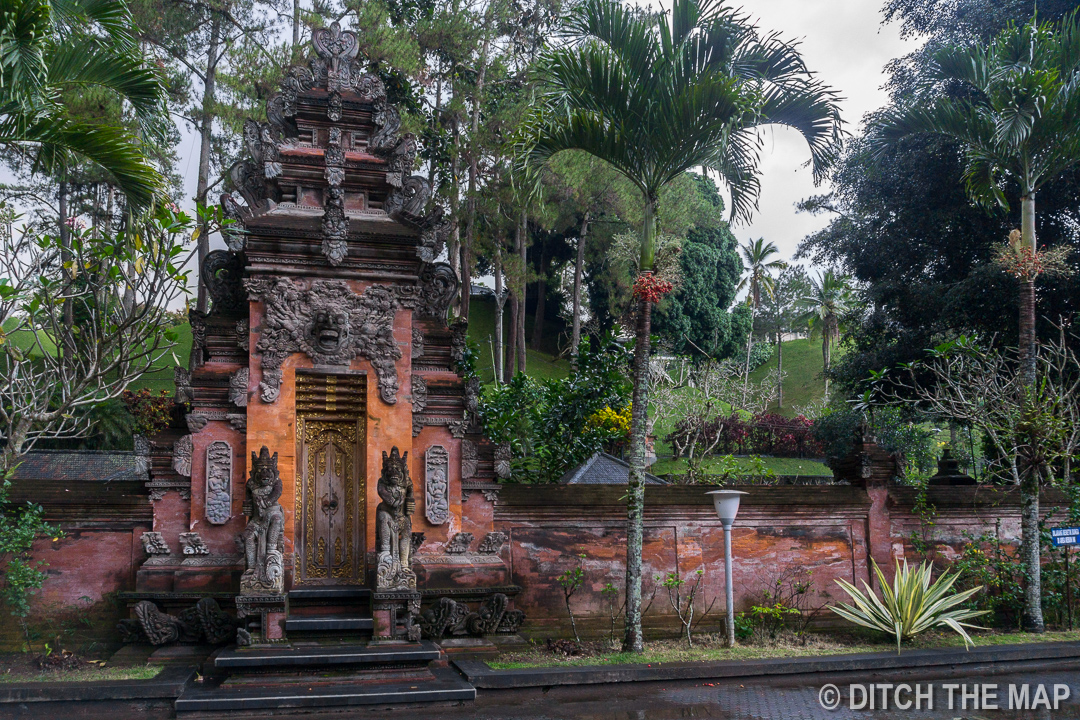
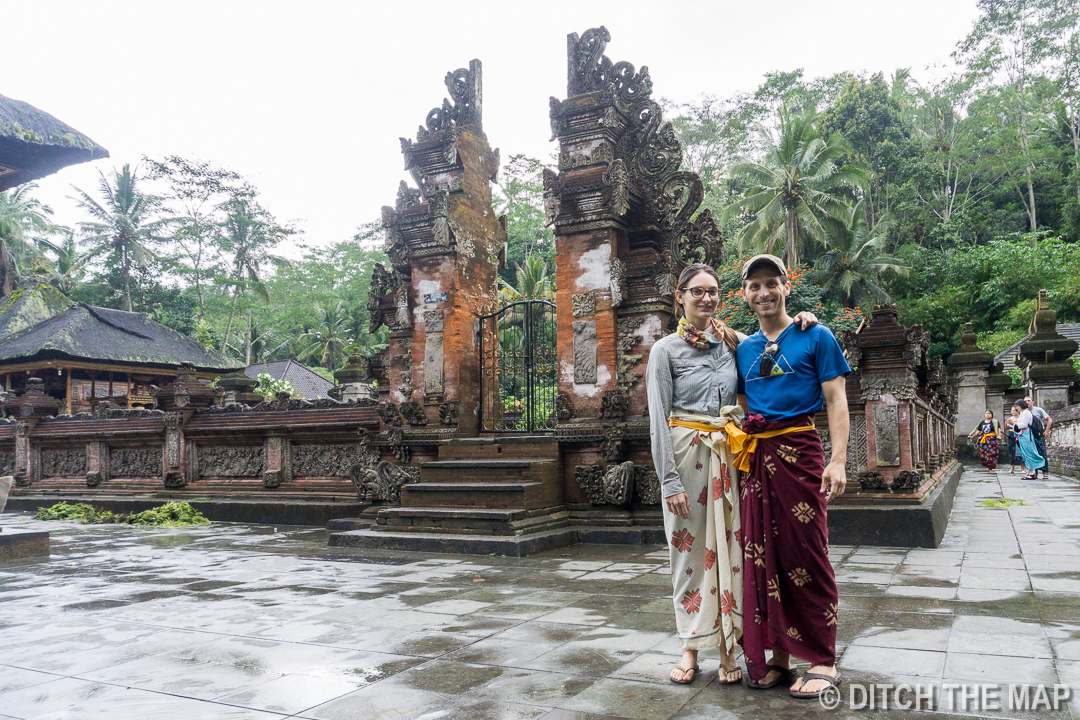
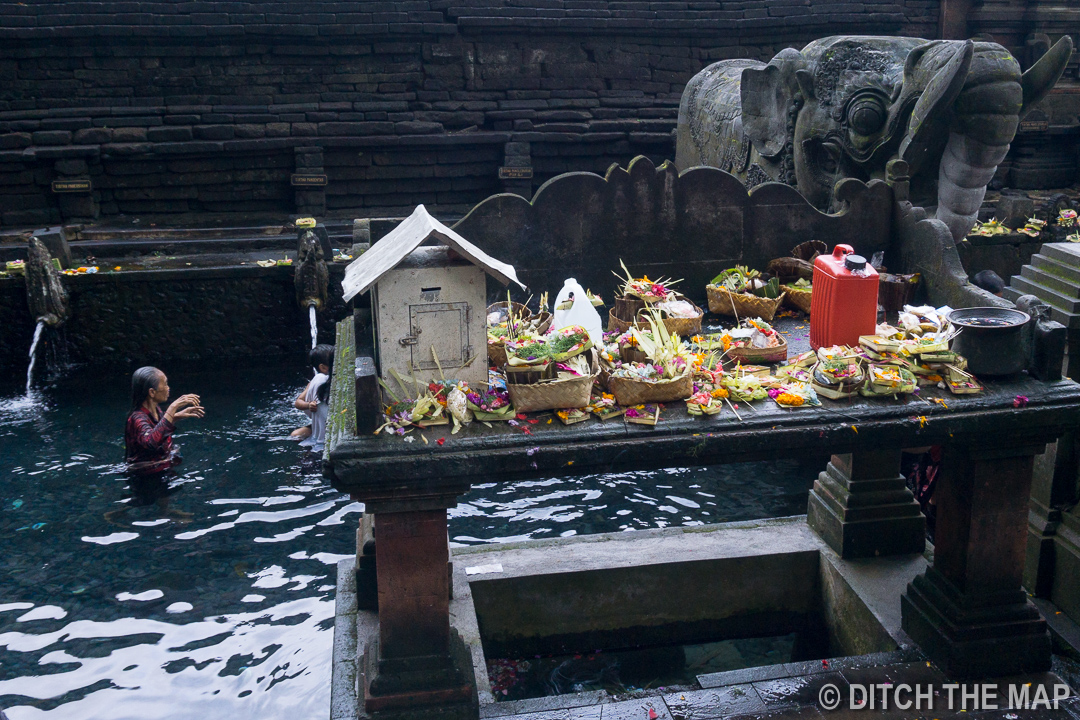
Holy Water Spring Temple in Ubud, Bali
Visiting Tirta Empu during our drip to Ubud, Bali (click to view)
Gunung Kawi Temple was just a short ride away. We entered the temple by the main road and wandered down countless stone stairs into the sprawling temple grounds. The temple isn't readily visible as soon as you enter, you need to explore a bit to find it. We thought we were lost on the slippery paths until we discovered a massive stone wall with 10 shrines, funeral monuments to be precise, carved right into it.
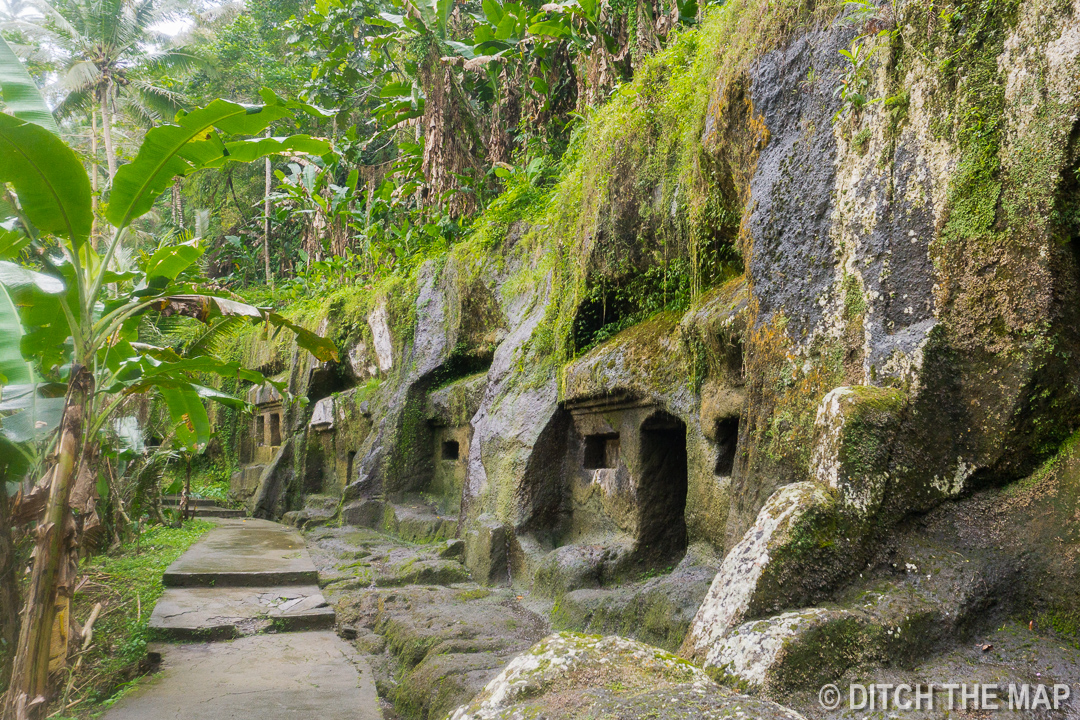
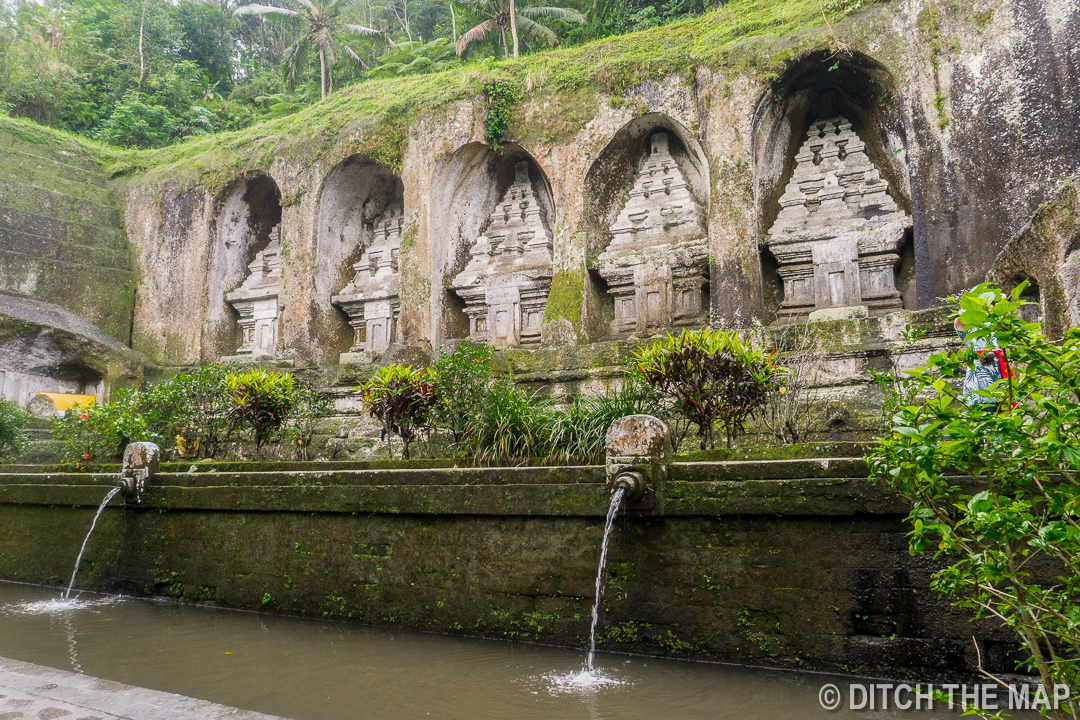
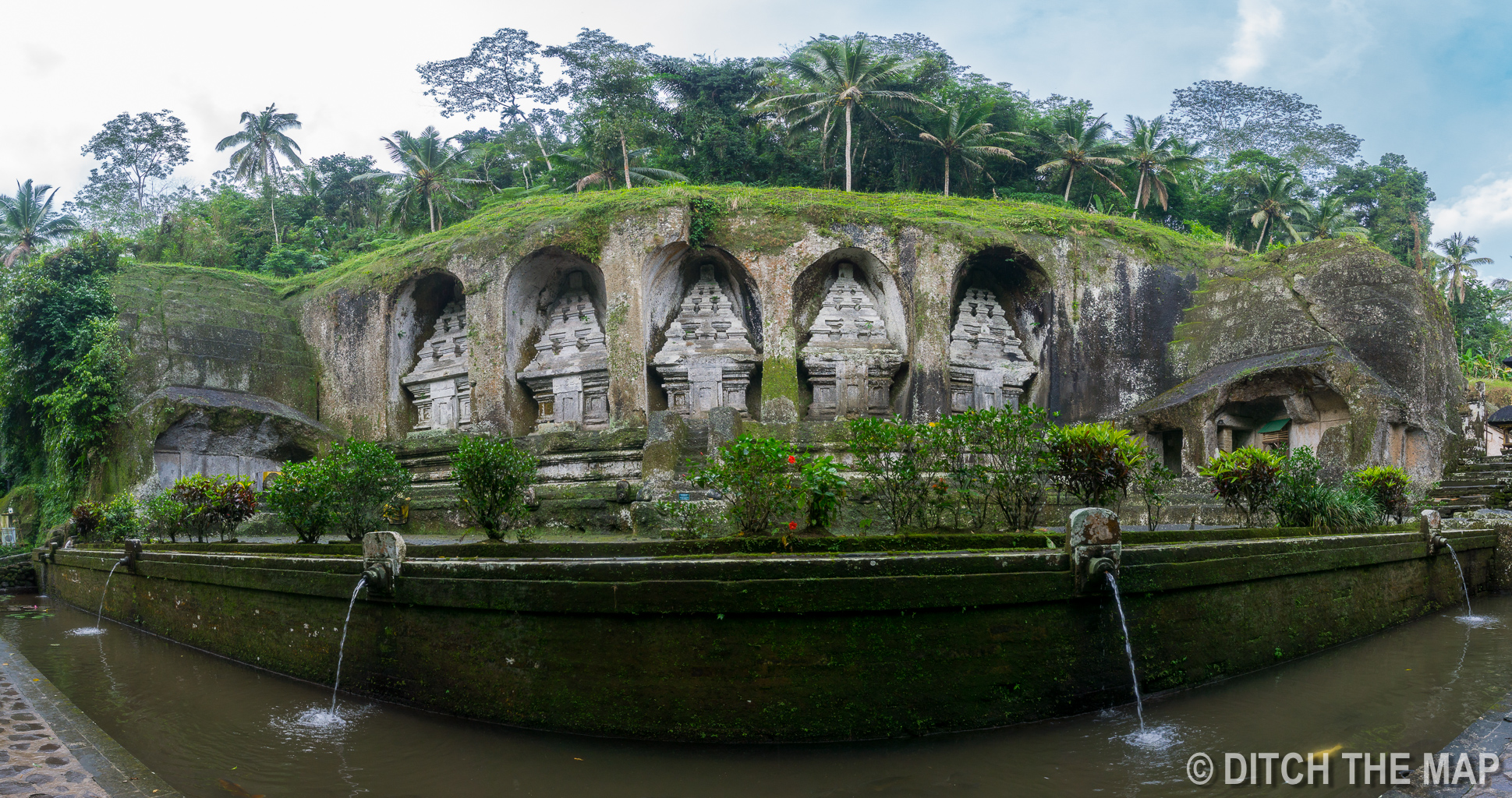
Later that evening we gave the city of Ubud a second chance. This time we found some quieter streets and really enjoyed ourselves. We are warming up to Ubud, it has great food and a lot to offer just a short ride outside of the city center. Speaking of delicious food, we enjoyed an incredible Gorgonzola burger at Cinta, our first burger in months after being beef-deprived in India. It was well worth the wait!
Last Day in Ubud
We spent our last day stopping in and out of jewelry stores as Bali is known for silver jewelry. (Just to look!) In one jewelry store we witnessed morning prayer. An employee in the store carried a tray of small offerings and incense and placed them throughout the store, stopping in front a shrine in the corner to place the last offering and kneel in prayer. We have observed one of the employees at our guest house do the same; it's a common occurrence here, people think nothing of it, and complete prayers and offerings just as they would any other daily routine. I actually read a quote about the busy-ness of the Balinese which stated that a typical Balinese woman spends a third of her time setting up for rituals, performing rituals and cleaning up after rituals.
The small offerings in little green reed baskets are filled with flowers and bits of food like slices of banana or balls of rice and they are everywhere! Walking down the street you could very easily step on one (or ten) of them as they're scattered all over the sidewalks, inside and in front of stores, and inside houses. One morning we even discovered an offering on our scooter- how thoughtful!
We decided against visiting to the monkey forest after observing the traffic, prices, and volume of tourists inside.
Traditional Balinese Cooking Class
On our last night in Ubud we took a cooking class at Paon Bali, a guest house just down the street. It is the highest rated cooking class in Ubud and as a result, completely full. We shared the 4-hour class with a large, friendly Australian family. The guesthouse accommodates two classes simultaneously, 20 people total, in two separate outdoor kitchens. The class was as hands-on as it could be with such a large group. We took turns chopping vegetables, adding ingredients and mixing over a row of burners. Because this particular class has been so successful they have it down to a science: you can tell they do it every night because it is highly efficient and sounds scripted. The woman in charge must have referred to us all as honey at least 50 times, which left an impersonal impression.
We cooked 7 dishes in total: mushroom vegetable soup, chicken and potatoes in a yellow curry sauce, long bean salad with coconut (seriously the longest beans I've ever seen), chicken sate, tuna steamed in banana leaf, gado-gado, and a banana custard for dessert. Surprisingly, every recipe called for an unexpected spoonful of palm sugar. Other common ingredients were lemongrass, garlic and peanuts.
Tulamben
Our next destination was the tiny town of Tulamben for a SCUBA diving course at Dive Concepts. Tulamben is an unassuming location for a diver's paradise, but under the water, not too far from the shore lays the USAT Liberty Wreck. This ship was torpedoed by the Japanese in 1945 and is now home to an impressive (not to mention, colorful) display of biodiversity. Scott chose Dive Concepts for his certification course because Dive Concepts is the cheapest dive center in all of Bali and Lombok, including the Gili islands. In addition to being the cheapest dive center, their Trip Advisor reviews are stellar: they are currently ranked #2 in Tulamben. Whereas many dive centers charge upwards of $425 USD for a certification, Dive Concepts charges only $225 at time of writing. We also stayed in their basic bungalows for a fraction of the cost compared to every other option in town.
Liberty Wreck of the Coast of Tulamben, Bali
Liberty Wreck of the Coast of Tulamben, Bali
Unfortunately my irrational fear of sharks got the best of me and I chickened out, even though several dive instructors assured me I would be totally fine. Anyways, Scott will tell you more about his very positive and enjoyable diving experience:
Scott Gets SSI Open Water Certified
The Dive Center is owned by a French man and every instructor/master diver teaching here is French. When not diving everyone is speaking French and smoking cigarettes. My instructor was a Ryan Reynolds look-a-like—so much so that Sylvie almost changed her mind about taking the course...ha-ha. My course consisted of 5 dives, 1 of which was in a confined space while the remaining 4 where in ‘open-water’, a 2-hr video, and studying from a course book. There is no pool at this center (unlike most others) so the confined dive was simply a ‘shallow’ portion in the sea. The shallow portion was still 6m (20 ft) deep.
A SCUBA Diver in the Liberty Wreck outside Tulamben, Bali
Sink or Swim
Fish Swimming Near the Liberty Wreck in Bali
My first morning started with a little (quite a bit) terror. The ocean was anything but calm and the shore was comprised of baseball-sized rocks. The rocks have been deposited by the nearby active volcano. Walking over the rocks without footware and carrying 35lbs of gear was not an easy task. Carrying a massive tank on my bank and lead weights around my waist didn’t aid in my balance either. Add to that a surging ocean with 5ft waves trying to knock me over and I had quite a challenge ahead—I hadn’t even begun my course. I was told that classes were canceled the previous day and 2 other students canceled today because of the rough surface conditions. I was the only student, but was accompanied by another diver who was currently working on her Master Diver certification.
I finally made it into the ocean and after going over some logistics descended to the seafloor, 20 ft (6m) below, to begin my initial training. I was being propelled all over the place due to the intense surging of the rough seas. The instructor added two more lead weights to my weight belt to give me some more stability, but even then it was tough to stay calm as I was being jostled all over the ocean’s uneven floor. I was breathing air, through a tube, under water for the first time (in 12 years) and being instructed/asked to perform simple maneuvers. I can see why the vast majority of dive centers use swimming pools for this portion of the course. When reading reviews for this dive center I did come across quite a few people that said they decided not to continue with the course because it was too overwhelming, read fucking scary, to have their first experience with SCUBA in the open ocean during a rough sea 20 feet below the surface.
I began to panic and even told myself that after I got through this one dive that I would simply request to cancel the course and that would be the end of my diving experience. If any of you readers know one thing about me it’s that I’m not one to let my fears affect my decisions. I slowed my breathing, concentrated on the fact that I had two experienced divers next to me, and saw this as another mental obstacle that I could overcome if I put my mind and body to it. I was amazed at how quickly I began to regain my composure. I performed the drills and went on to dive again later that day. The video, homework, and course material took an additional 6 hours to get through that evening, ugh!
Learning the Ropes
The next day I was a little scared to go diving again because the maneuvers required for the course where to be tougher. I performed 3 dives on my second day of the course. The first was an ‘open-water’ dive, which simply meant another dive at 20 ft below the surface of the rough sea (though the ocean was a bit calmer this day). Three of the countless maneuvers I had to perform during this dive are described here:
Remove my mask, throw it in front of me, locate it, correctly place it on my head, and clear the water from the cavity to regain full vision
Throw my primary regulator (breathing apparatus) over my head, retrieve it using several pre-defined methods, and purge the mouthpiece before I could resume breathing.
Have my air supply completely shut off and practice an emergency accent, all while minimizing the chances of lung overexpansion (a possibly fatal consequence of ascending to rapidly).
Conducting a Buddy Check in Bali
I can imagine that the above tasks would scare some people—can you imagine being 20 ft deep in the ocean without any vision at all? What about having your breathing hose ripped from your mouth and searching desperately for your flailing mouthpiece all while remembering to breath out as to prevent serious injury? How about breathing into a regulator only to discover that you have no air left?
My next two open-water dives were incredible. My diving experiences today have inspired me to put a larger emphasis on diving during my time in SE Asia. I dove down to 19m (63ft) below the surface of the ocean and what I saw left me astonished. The 60-year old wreck on the ocean’s floor stretched for what seemed like forever and offered any levels for a diver to explore. I swam inside, around, under, and beside the various chambers—coral was growing on every surface. I had to use quite a bit of skill to navigate through the boat’s skeleton. I saw rays, lionfish, mola fish, an enormous barracuda, stonefish, angelfish, along with countless other animals swimming peacefully beside me. Below are photos of the actual fish I saw!









Reflections
I love learning—exploring countries is one way to learn about our world. I have hiked many mountains, visited countless tribes and cultures from all over the world, eaten cuisines that some couldn’t even dream to stomach, and now I’ve opened a page in a book that I only recently learned existed. Diving has permitted me to see so much of the world that has remained hidden beneath the surface. Now that I have passed my SSI Open Water Diver exam with a score of 100% I plan to be diving quite a bit over the next 6 months. Now if I can only get Sylvie to learn too…
My SSI Open Water Diver Certification
Check Out Our Route Through Bali
My SSI Open Water Diver Certification
Our Route Through Bali, Indonesia
Remember to Pin this article if you enjoyed it.
Original publishing date: June 29 - July 5, 2016
If interested check out private island events.
















